
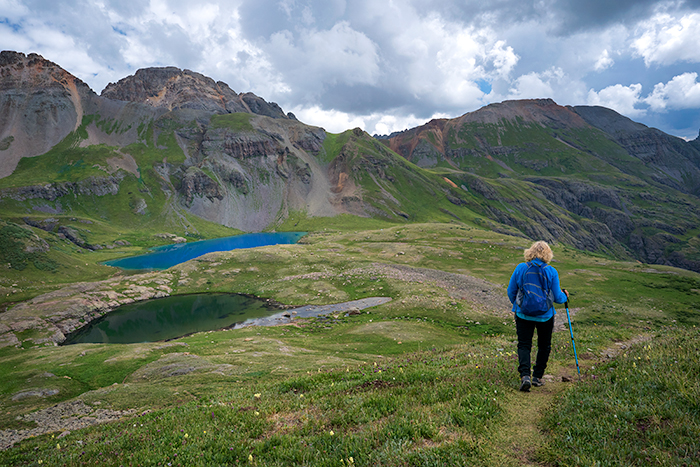
Hiking toward Ice Lake basin at 12,000 ft.
Why Acclimatizing to the Altitude in Colorado is important…
Imagine this.
You’re hiking alone in the mountains on a beautiful day. The air is crisp, the trail is clear and you’ve hardly broken a sweat. You’re so distracted by the epic scenery that you don’t realize you’re getting dehydrated. If you stopped to think about it, you’d realize that you hadn’t peed since early this morning and it’s already half past noon. A splitting headache creeps in but you keep going, climbing higher and higher. In the distance you spot an old miner’s cabin by a mountain lake. How cool! Intrigued, you veer off the path to go investigate. It didn’t look that far away. But looks can be deceiving. A wave of nausea comes out of nowhere and your head is reeling in pain. Almost there, you collapse on a rock and shuffle through your stuff looking for Tylenol. Clouds darken the skies and thunder claps nearby. You dart toward the cabin to escape the rain before it hits. But maybe you shouldn’t stay? There’s not much to see inside this battered shell. Harsh winds have eroded most of the roof. You certainly don’t want to be up here in a lightning storm. How many miles down to the trailhead from here you wonder, looking for your map. Wait. Where’s your backpack? Still at the rock? You rush out of the cabin scanning the landscape. Exactly which way had you come? Why was this so confusing? Ooooh, your head! If it only quit pounding you could concentrate!
Where’s the trail??? Thunder builds. And so does your panic. Forget the trail. You start hiking along an exposed ridge to look over the edge so see if there’s a shortcut down. Is that a trail way down there? You start heading down a steep slope scattered with loose rocks and gravel. You really need to hurry before the storm hits. Oops—in haste, you trip—and clumsily break your fall. Your head spins when you stand up too fast, and you start puking again. Trying to clear your head, you force yourself to reassess the situation. Staring at your feet you notice the slope is getting steeper and is covered in scree. No lightning or heavy rain yet, just a light mist. But there’s no guarantee this shortcut leads to a trail which you can no longer see. If only you could decide what to do. You take a tentative step and slide 2 feet in the scree. Heart racing, head throbbing and legs wobbly you simply freeze in your tracks as rain begins to fall…
It could happen to you.
Confusion, clumsiness, dehydration, dizziness and headaches can occur from altitude sickness.
But knowledge is power. Learn what it is, how to treat it, and most importantly, how to prevent it from happening in the first place! Find out what steps you can take at HOME in addition to the best practices to follow when you arrive. Properly acclimatizing to the altitude in Colorado should be a priority when planning your trip. Especially if sleeping high in the mountains. Don’t let it ruin your trip…

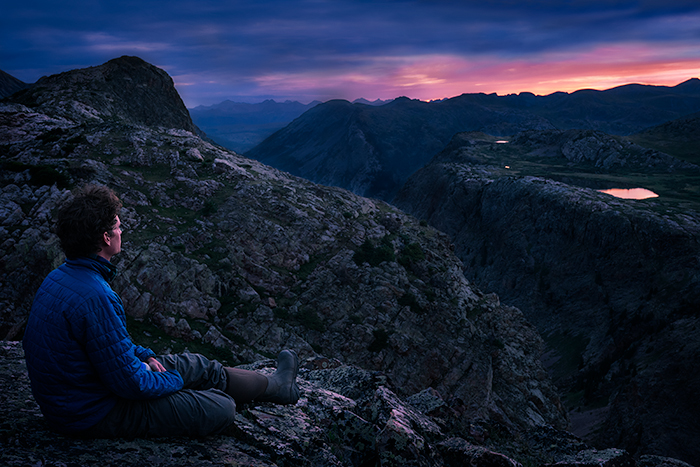
Sunset while camping at high altitude in the San Juan Mountains
ALTITUDE SICKNESS
What Is It?
Acute Mountain Sickness (AMS), more commonly known as Altitude Sickness, is an acute illness that afflicts people at high elevation, generally over 8,000 feet. More serious versions of AMS include High Altitude Cerebral Edema (HACE) and High Altitude Pulmonary Edema (HAPE), which affect one’s brains and lungs.
What Happens to our Bodies?
Our bodies sense the change in oxygen at just 5,000 feet elevation. But AMS kicks in around 7,500 to 8,000 feet.
At high altitude it feels like you can’t get enough air when you take a breath. The air’s too thin—I can’t breathe!! That feeling, being short of breath, causes people to panic a little, causing them to breathe faster and shallower. According to Dr. Peter Hackett, an emergency physician and leading authority expert about high altitude research (altitudemedicine.org), the pressure in the atmosphere decreases as we climb higher. The percentage of oxygen remains the same, 21%, but the air at 8,750 feet elevation is equivalent to breathing air with 15% oxygen because the atmospheric difference results in 29% less oxygen in that air compared to sea level.
And if we ascend to 14,000 feet (goal among the “14ers” mountain climbers), the air has a whooping 43% less oxygen than at sea level.
Not a mountain climber, you say? Hiking trails in the Rockies and San Juan Mountains climb pretty high. Even day hikes can ascend to 12,000 feet. And if you ski, know that ski lodges sit at 6,000-9,000 feet, and ski lifts whisk you to slopes around 13,000 feet.
No wonder we feel short of breath! (And that’s not even adding any exertion yet.)
And with less oxygen in the blood, our heart and lungs have to work harder. Which causes our pulse to race and our heart to beat faster.
As our bodies strive to acclimatize and adjust to the higher elevation, additional red blood cells are created and our body fluids, salt balance, lung pressure, blood acidity and electrolytes are altered. But the most dangerous change that can affect our bodies is the swelling of our lungs or brain. Ascending to high elevations too quickly for extended periods of time, without acclimatizing, can cause fluids to build-up, resulting in coma or death.
Who Gets Altitude Sickness?
Anyone who does not take the time to acclimatize. Even people living in the mile-high city of Denver (5,280 ft) can get AMS when hiking the San Juan Mountains near Silverton (9,318 to 12,500 feet) without taking sufficient time to adjust to the elevated altitude.
All ages. Children are not more susceptible.
All fitness levels. Athletes too. (Sometimes the fit are more prone to AMS because they are used to pushing themselves and are more likely to keep climbing that mountain without resting.)
Affected By:
- Time span– how quickly you ascend to 8,000 feet
- Elevation gain of 2,500 feet (or more).
- Time spent at high elevation. Risk goes up if sleeping at high elevation.
- Over exertion. Hiking/skiing/rock climbing faster, harder, or longer than you should.
- Being overweight, having sleep apnea, COPD or respiratory infections.
Symptoms:
- Headache is often the 1st complaint. Can feel dull or feel like a severe migraine (but no aura and not unilateral).
- Weakness, dizziness, fatigue, to utter exhaustion to the point of not being able to move.
- Nausea, vomiting, lack of appetite.
- Insomnia (even though groggy, restless sleep).
- General malaise, feel achy and awful all over, like a really bad hangover.
- Swollen hands, face or feet.
More Serious Complications
HACE Symptoms (Swelling of brain):
- Clumsy, unsteady gait when walking. Trip easily and hike off-balance.
- Feel numb, dizzy.
- Personality changes may occur, such as sudden anger, uncharacteristic outbursts or withdrawn behavior.
- Loss of consciousness, leading to death.
- Micro hemorrhages (tiny traces of bleeding in brain) can continue for years afterward according to researchers studying the long-term effects based on MRIs.
HAPE Symptoms (Swelling of lungs):
- Persistent dry cough.
- Fever, bluish tinge to skin.
- Panting for breath, even at rest.
- Tight chest.
- Confusion, exhaustion.
- Fluid build up on lungs leading to death.
TREATMENT

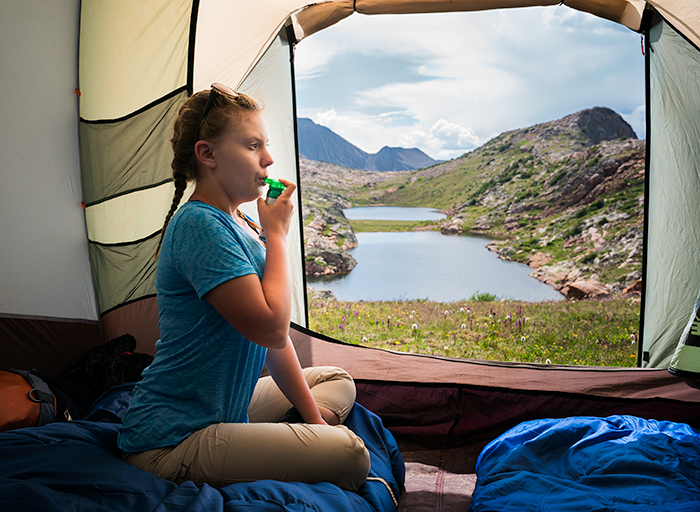
Got oxygen? Portable canisters can help when acclimatizing to the altitude in Colorado.
For Mild Symptoms of AMS (usually resolves in 6-48 hours):
- Hike at a slower pace.
- Rest often, and drink water.
- Practice yoga/pursed lip breathing (Inhale deeply through your nose, exhale slowly out your lips. Smell the flowers. Blow out the candles.)
- Locals swear by this: take 2 Antacids with water at the first tinge of a headache. Doctors recommend taking Tylenol or Ibuprofen.
- Don’t ascend any higher for 24 hours.
- Inhale a few deep breaths from your portable Oxygen canister (sold in outdoor gear stores).
- Consider getting IV therapy while you acclimate to higher elevations before you embark on a hike. Rocky Mountain IV Medics, based out of Denver, can send paramedics to administer affordable IV’s chock full of vitamins and minerals to help rehydrate your body and alleviate those symptoms.
For Moderate Symptoms:
- Descend to lower elevations, at least 1,000 feet. Stay there 24-48 hours.
- Get supplemental oxygen. Rest.
- Diamox Rx medication (targets chemical balance in blood, can cause blurry vision and pins and needles sensations)
For Severe Symptoms:
- Descend 2,000 feet immediately.
- Get supplemental oxygen.
- Receive medical attention from a doctor who will prescribe medication based on individual needs (could include blood pressure, steroids)
- Enter a Hyperbaric chamber. Or if stuck on a mountaintop with no way down, and your medically trained guide just happens to have a $3K Gamow bag, slip inside the portable inflatable hyperbaric chamber and feel the relief equivalent to descending 5,000-7,000 feet.

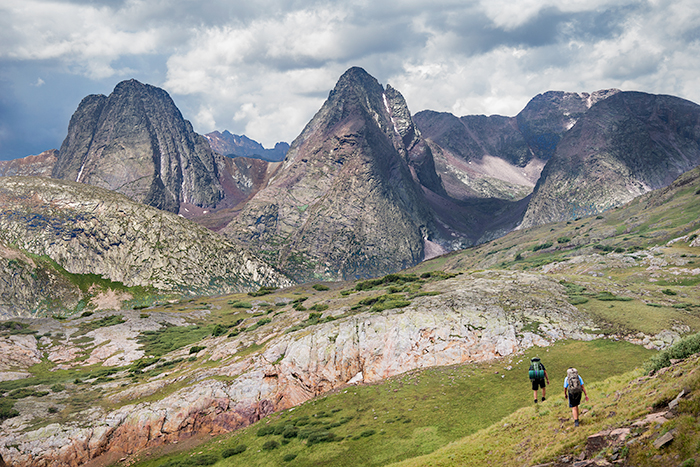
Acclimatizing to the altitude in Colorado before you hike makes all the difference! Epic or miserable…
PREVENTION
Acclimatizing to the Altitude in Colorado: What you can do at HOME
Analyze your health
Consult your doctor about any medical condition that may be exasperated by altitude, such as heart disease, pulmonary hypertension, COPD, cystic fibrosis, or brain tumors. Carry out diet recommendations, physical modifications and obtain medications (such as Diamox) per individual needs. Know the maximum elevation you can safely ascend.
Train for Altitude
Planning on hiking, skiing, climbing, or biking in Colorado? If so, aerobic training is recommended to improve your VO2 (maximum volume of oxygen that your body can use during activity). Aim for high intensity cardio 3x a week and hill walking (or treadmill inclined) 2x a week. If planning a 8 hour hike at altitude, slowly build up to an 8 hour hike at home. Also practice pursed lip breathing—take deep abdominal breaths (should feel stomach move, not your shoulders). Inhale deeply through your nose, and slowly exhale through your lips. This helps control breathing rate and improves quality in preparation for the thin air. It also reduces anxiety and shallow breathing if practiced at altitude when feeling very short of breath.
Plan your Itinerary Carefully
- What is the highest elevation destination of your upcoming trip?
- What type of physical activity will you do? Mild, moderate or strenuous?
- Consider joining multi-day excursions with experienced mountain guides who can provide medical assistance.
- How many nights will you be sleeping at high elevation?
- What is a convenient airport to fly into along your route where you can stay a couple nights under 7,000 feet?
- Then plot out your route to allow enough time to acclimatize to the highest destination of your trip: Allow 24 to 48 hours at a destination for every 1,000 ft gain. Allow extra nights for your body to adjust if strenuous activity will be involved.
- Google the elevation of different day excursions along your route that ascend to higher elevations so you can incorporate those into your trip and return to sleep at lower elevations as you acclimatize.
- Increase length and difficulty of activity as your body adjusts to thin air.
Airports at intermediate altitude:
Denver 5,280 ft.
Colorado Springs 6,030 ft.
Durango 6,522 ft.
Examples of Day Excursions at High Elevation:
Garden of the Gods just outside of Manitou Springs (close to Colorado Springs) makes a great destination for short simple walks along paved paths or 1-3 hour day hikes on 15 miles of trails where you can scamper up intriguing sandstone rock formations. Mellow or moderate physical activity at intermediate elevation. Outfitters also offer guided rock climbing, horseback riding and electric bike tours. Elevation base begins at 6,311 feet. Nearby is Pike’s Peak where you can drive 19 miles to high altitude at 14,115 feet.

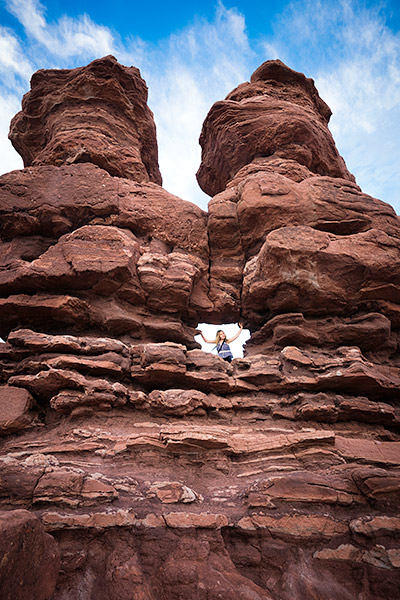
Garden of the Gods
Monarch Crest Tram located off Highway 50 between Salida and Gunninson in central Colorado is an easy excursion but at high altitude. Ride the 10 minute gondola up to the Continental Divide at 12,012 ft for panoramic views of the Sawatch Mountains and even Pike’s Peak on a clear day. Open from mid-May to Fall (exact dates depend on snowfall).

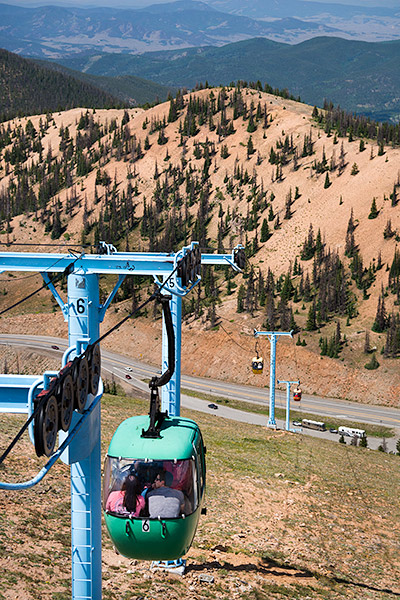 Once at the top, stay as long as you’d like. How is your breathing?? Test your stamina by hiking part of the Continental Divide Trail or hike 2.1 miles down to the parking lot. Mountain bikers can also ride 15-31 miles along a high-country ridge on the moderately rated Monarch Crest trail.
Once at the top, stay as long as you’d like. How is your breathing?? Test your stamina by hiking part of the Continental Divide Trail or hike 2.1 miles down to the parking lot. Mountain bikers can also ride 15-31 miles along a high-country ridge on the moderately rated Monarch Crest trail.

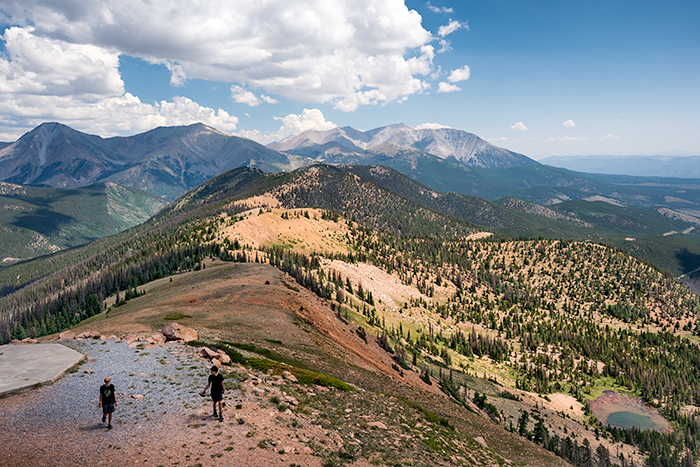
Continental Divide at Monarch Pass, Colorado
Jeep Tours are a fun, easy way to get up high in the mountains without any strenuous physical exertion on your part. Ouray and Silverton both offer many excursions to visit jaw-dropping mountain passes, ghost towns or waterfalls. Or, if you’re an experienced driver, you can rent a four-wheeler and bump along the rutted roads yourself.
Read about my favorite Jeep Tour to Imogene Pass.

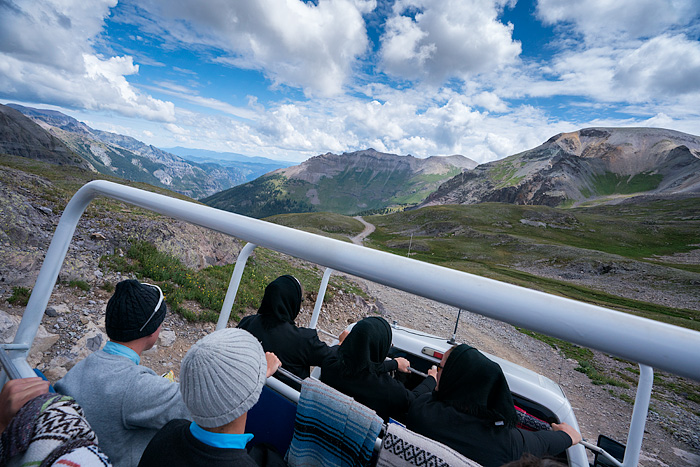
Imogene Pass at 13,114 feet, Ouray
Hiking options are plentiful across the state. The website AllTrails.com is a great resource to find your perfect trail along your chosen route. Rated by exertion level, the trails have maps, descriptions, photos, reviews and driving instructions. The hardest part is narrowing down the choices from the 3,545 trail options!!
Read about my favorite day hike to Ice Lake.

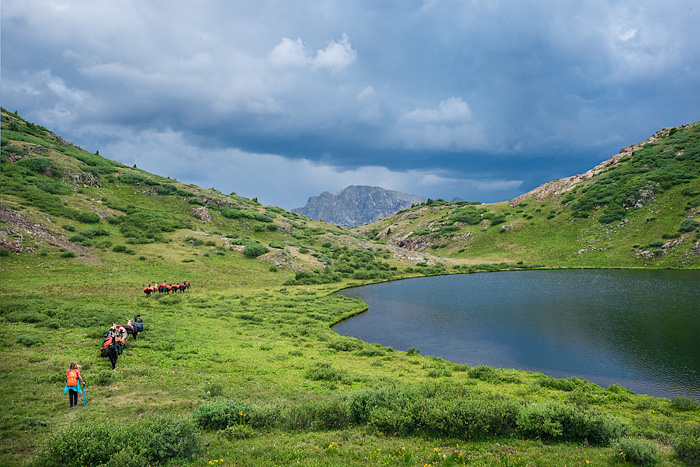
Hiking Highland Mary Lake, a 5 mile out and back trail from Silverton
OUR EXAMPLE:
I planned my Colorado vacation revolved around a 5 day llama trekking trip where we would be sleeping in tents at 11,500 – 12,500 ft elevation in the San Juan Mountains. Coming from sea level, I knew that it would take a good week to get acclimatized before we began this moderate-strenuous hiking trip. So I carefully crafted our itinerary to stay at an intermediate elevation of 6,400 ft for 3 nights before climbing higher and higher, mindful of staying 24-48 hours in destinations with an 1,000 ft elevation gain.
Once in Colorado, we took it easy—sightseeing, walking and taking short hikes at Garden of the Gods. We added short excursions ascending to high altitudes by car, jeep and tram but returned to lower elevations each night to sleep. By the time we hopscotched our way from Manitou Springs (6,412 ft) to Silverton (9,318 ft) we were ready to test our stamina with a strenuous full day hike to Ice Lake (12,270 ft.) a couple of days prior to embarking on our llama trek in the Weminuche Wilderness.
It worked.
Remarkably, neither of us (flat-landers from Indiana) were afflicted with altitude sickness. OK, maybe just a twinge that 1st night at camp (11,500 feet). I awoke feeling cold and had a painful headache. Then couldn’t fall back asleep. (My insomnia could’ve been from worrying about getting AMS on subsequent nights at 12,500 ft.) But my symptoms vanished by mid-morning, and thankfully never affected me again. Yet, 2 other couples on our guided trip, who lived in Colorado (Denver & Ridgway), did feel AMS symptoms linger for a few days.

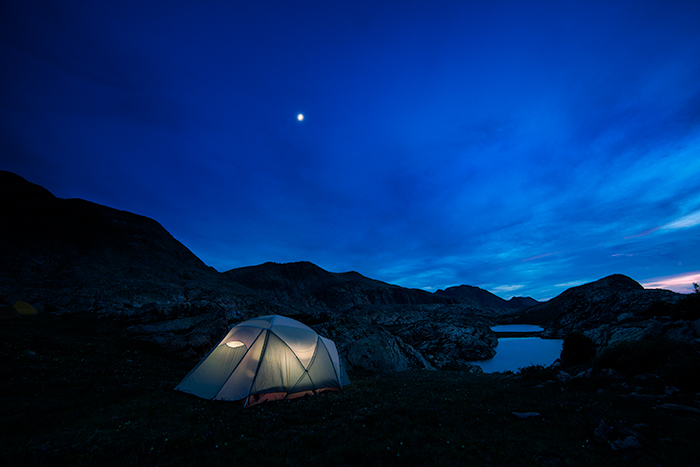
Camping at 12,500 ft elevation, Weminuche Wilderness, Rocky Mountains
This was Our Itinerary:
Day 1: Flew into Colorado Springs (6,035 ft). Overnight in Manitou Springs (6,412 ft) 3 nights
Day 2: Mellow walking tour & sightseeing
Day 3: Short hikes at Garden of Gods & climb teensy bit of the Manitou Incline
Day 4: Driving & sightseeing. Overnight in Salida (7,083 ft)
Day 5: Driving & sightseeing. Rode Monarch Ski tram up mountain (12,012 ft) & visited Black Canyon (9,040 ft). *Ocular migraine. Overnight in Ridgway (6,985 ft)
Day 6: (Backtracked to Montrose for eye doctor) then on to Ouray. Short hike & sightseeing. Overnight in Ouray (7,792 ft) (2n)
Day 7: Jeep tour to Yankee Basin & day hikes.
Day 8: Jeep tour to Imogene Pass (13,114 ft). Drive to Silverton (9,318 ft) Stay 3 nights.
Day 9: Hike to Ice Lake (strenuous, hiked to 3 lakes including Fuller Lake at 12,609 ft for an elevation gain that day of 3,000 feet!)
Day 10: Recover. Jeep tour to ghost town.
Day 11-15: Llama trekking in San Juan Mountains (4n camping at 11,500 & 12,500 ft)
Day 16: Rest day in Durango (6,522 ft) 2n
Looking at the elevation in bold, you can see our route ascended gradually and included stays of 2 or more nights in destinations that had a gain of around 1,000 ft. Our short day excursions into higher altitude also in bold. Perhaps it was overkill to stay 3 nights in destinations with 1,000 ft elevation gains instead of 1 or 2 nights. Had we not been planning on camping 4 nights at elevations around 12,000 ft I might’ve arranged it differently. But, I wanted to play it super safe and let our bodies acclimatize….so looking back, I wouldn’t change a thing!
Create your itinerary based on YOUR needs.
If planning a hiking trip in the San Juan Mountains, either Durango or Colorado Springs/Manitou Springs work as a good starting base, with similar elevations of around 6,000 ft. Both have airports with competitive rates for flights and car rental. I flew into one and out the other. See the previous post for more tips on planning.

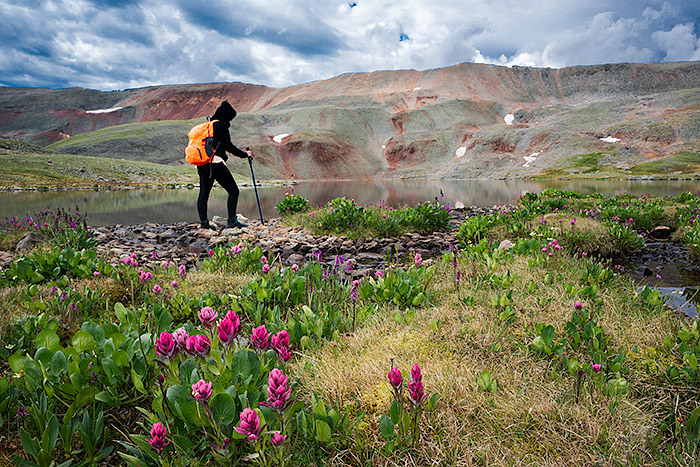
Fuller Lake in the Ice Lake Basin, 12,609 ft elevation
One strange altitude effect…(I attribute it to the altitude anyway)
I did have one scare though. It happened on Day 5 during our road trip from Salida to Ridgway. That morning we rode the Monarch Pass ski tram up to the Continental Divide (12,012 ft) and spent an hour at the top (which was a 5,000 ft elevation gain), then drove the South Rim route of the Black Canyon of the Gunnison National Park (9,040 ft). My only physical exertion that day was running back to the car from a rocky overlook at Black Canyon (about 5 minutes). An hour later, while driving, my left eye went haywire. A dark ink spot appeared, like a floater (which I am not prone to having). The floater quickly intensified and transitioned into a kaleidoscope of intriguing patterns with changing shapes weaving in and out ..artistically…beautifully…like visual poetry…if only I could’ve photographed it! Of course there was absolutely no vision in that left eye. The swirling, dramatic designs took up the whole eyeball’s field of vision like an abstract IMAX movie playing in one eye. It was highly distracting. And I was driving.
And wouldn’t you know I was on my way to meet the creative director for a photo shoot scheduled later that day. (As you guessed—my left eye is my shooting eye.)
Suddenly afraid that I was experiencing a detached retina, I pulled into the Ridgway Medical Clinic when we entered the small mountain town. The clinic receptionist called an eye clinic in the larger town of Montrose an hour away, and I spoke with a nurse who ruled that concern out. As long as I was not seeing lightning streaks I was not likely experiencing a detached retina I was told. But they squeezed me into their schedule for the next afternoon. Wasn’t crazy about backtracking and driving 2 hours round trip, but I knew it was important to get my eye checked out before we headed into higher elevations on a 5 day llama trek.
The next day a caring opthamologist dilated my pupils and performed a thorough eval. No detached retina. Just an ocular migraine. An ocular migraine? The term sounded so strange. I didn’t even have a headache, much less a migraine! But was very glad to know the inkblot floater with it’s erratic, long curving tail would quit darting around eventually (took 3 days to completely disappear). The kaleidoscope patterns were already fading.
Ocular migraines are thought to be caused by reduced blood flow or spasms of blood vessels in the retina. An effect from altitude? Researchers don’t have clear cut answers about that. They do agree that corneas can swell at high altitude from low oxygen.
Perhaps the fact that I had RK (radial keratonomy) surgery to correct my near-sightedness 20 years ago had something to do with exacerbating that? Unlike the uniform swelling that occurs in normal corneas, eyeballs marred by RK incisions experience irregular swelling from low oxygen which can lead to potentially serious visual complications. (It was my understanding from the surgeon who performed my RK surgery that I could ascend safely to 14,000 feet. But then again, look at the long-term effects of that disastrous surgery and you can only wonder…)
Anybody else that had RK surgery in the past ever experience something similar at altitude?


Hiking with llamas around Highland Mary Lakes
Read Part 1 of our Llama Trekking Adventure
Acclimatizing to the Altitude in Colorado: TO DO when you ARRIVE
- Take it easy the first couple days. That doesn’t mean driving up to Pike’s Peak, which is 14,115 feet!
- Stay overnight at an intermediate elevation around 5,500-6,500 feet.
- Avoid alcohol the 1st night or two at high elevation.
- Drink 1.5 liter more water daily than you do back home.
- Check the color of your urine to know if you’re hydrated (clear) or dehydrated (dark) so you can drink more water if needed.
- Drink coffee or Mt. Dew if that’s your routine. According to Dr. Hackett, the leading high-altitude expert, caffeine is okay!
- Eat bananas (potassium) and complex carbs. Go easy on sugar and salt.
- Activities: start on fairly flat terrain and go half the distance you normally would at home, gradually building up to full runs or long steep hikes as your body adjusts to higher climes.
- Study topo maps of the hike you plan to take before you hit the trail. It’s surprising how confused you can get at high altitude!!
- Slowly ascend to higher elevations. Acclimatizing to the altitude in Colorado gradually is key.
- Spend 24-48 hours at a destination for each 1,000 ft elevation gain.
- If you have to ascend to 8,000 ft or more without having time to acclimatize (why?) consider taking Rx Diamox 24 hours prior to ascending and continue taking for the 1st 2 days at high elevation. This medication is 75% effective in speeding up acclimatization and helping prevent AMS complications, but does come with side effects.

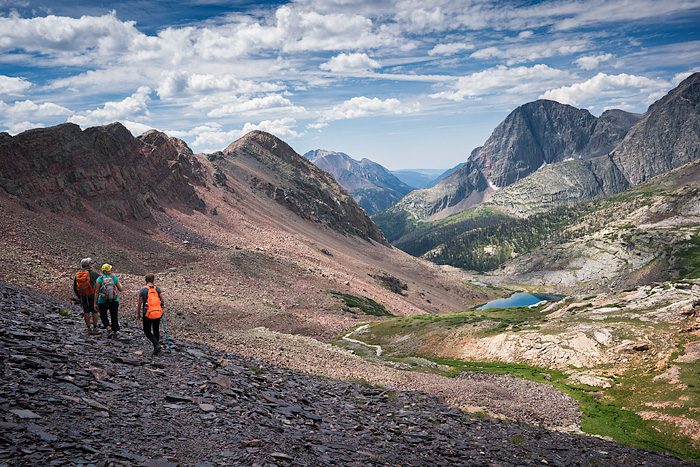
Vallecito Lake, Weminuche Wilderness
PACKING CHECKLIST
- If heading into the mountains, wear the right clothing and come prepared for the altitude. Of course, water is essential. But so are the rest. Before you hit the trail, throw these in your backpack.
- Topo map. Know how to read the elevations and plan descent routes for emergencies.
- Water bottle to keep track of how much you’re drinking (aim for 1.5 liters more than normal).
- Portable oxygen canister (available at tourist shops and outdoor gear stores).
- Ginger tea to combat nausea.
- Antacids or Tylenol for headaches. Diamox Rx if prescribed.
- Snacks (nuts, granola bars, jerky, bananas).
- Vaseline and Q-tips to swab nostrils prone to nosebleeds from the dry, mountain air.
- Sunscreen, hat, sunglasses to prevent sunburn (and snow blindness in winter) since there’s less atmosphere closer to the sun.
- Rain gear, fleece layers, gloves for summer hikes and overnights at altitude.
- Whistle for emergency help.
Colorado’s stunning mountains beckon…
Prep for the altitude, then get out there and explore! Adventures are waiting…
Pin it! Save a pic to your Pinterest travel board to read it later…

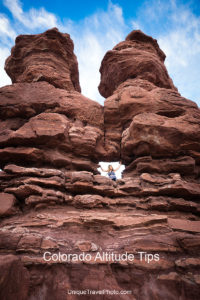

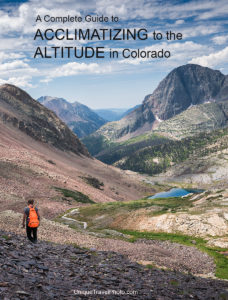

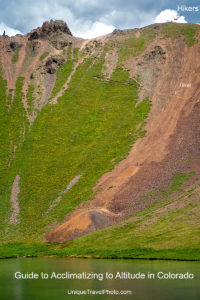

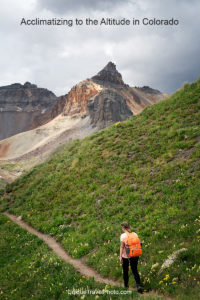


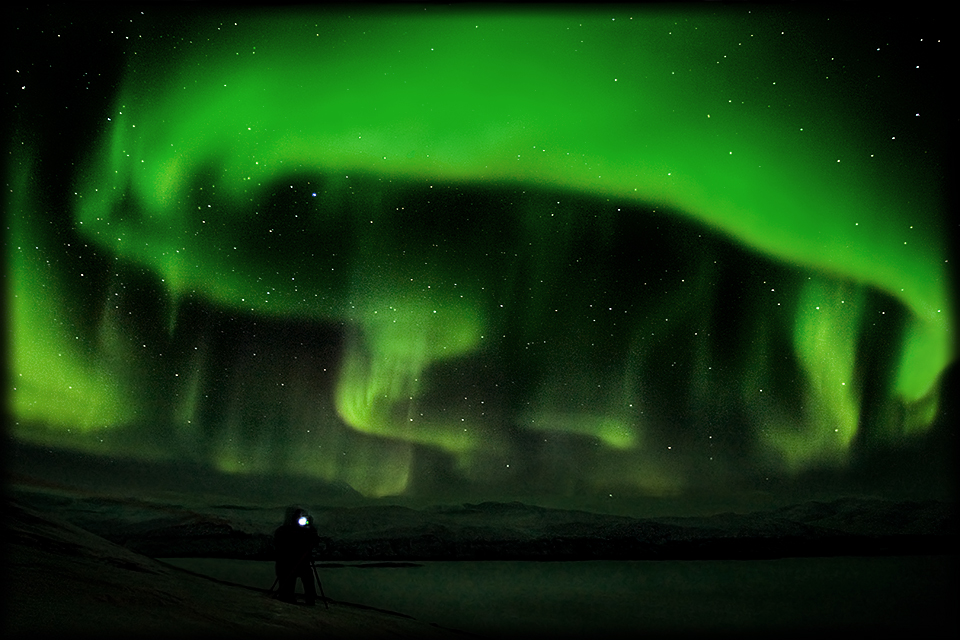
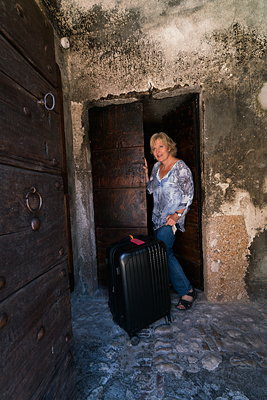
Robert Jackson - Hello,
The blog informative information is very the best acclimatizing to the altitude in Colorado is nice. thank you for share this blog
Kim - Thank you! It’s exactly the kind of info I wish I had read before I visited!
Robert Jackson - Hello,
it is the best information is looking great and a unique travel photo in Colorado is a nice destination. thank you for share this blog